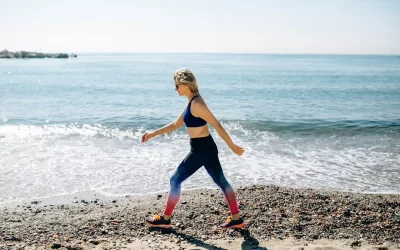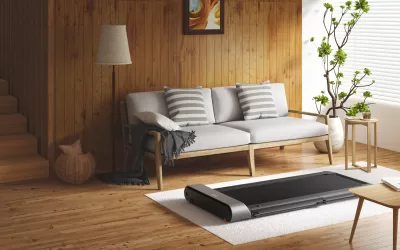So, you’ve got your brand new walking pad, and you’re excited to start moving more, and feeling better with every step. Using a walking pad is very easy, whether it’s for fitness, productivity, or simply moving more throughout your day, you’re in for a treat! However, before you start, let’s walk through some essential things to keep in mind so you can get the most out of your new equipment, and put your mind at ease in relation to common things you may notice as you walk more.
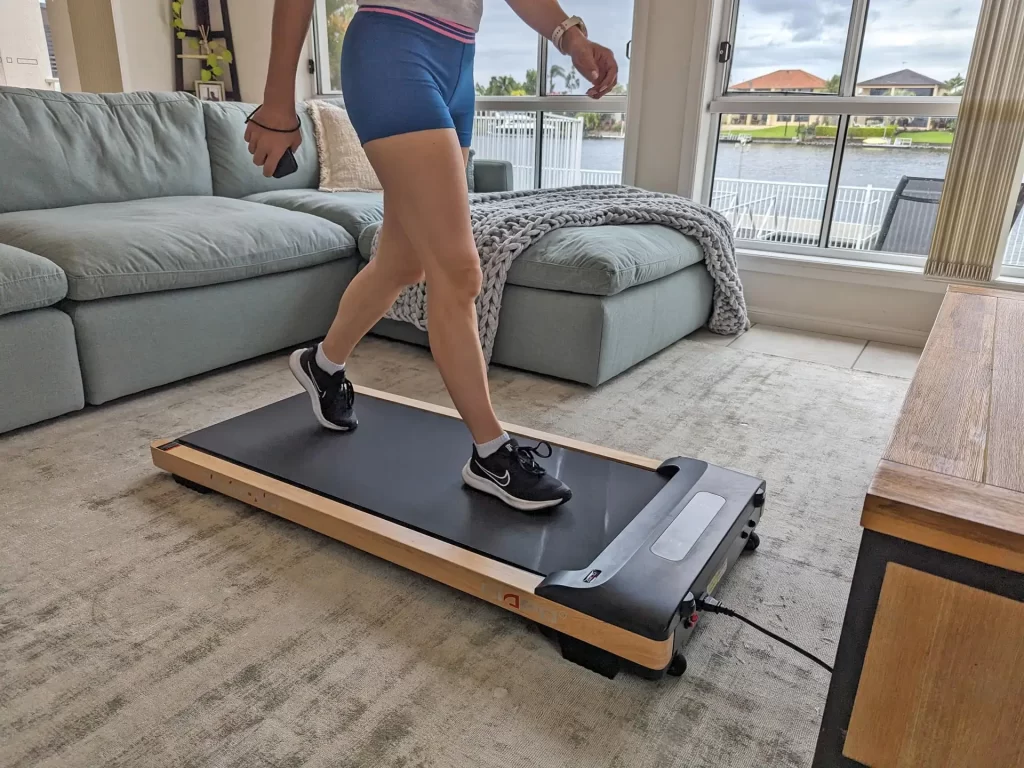
1. Oiling the walking deck
So what exactly is the walking deck? It’s the material that the walking track surrounds, effectively what you’re actually walking on as you use the machine. When the walking pad starts, the walking track moves around the walking deck.
Although some walking pads suggest the deck comes pre-oiled, generally we suggest that users add another dose of lubricating oil to the deck before use the first time. This ensures the the track moves as smoothly as possible, and reduces wear and tear not only on the track itself, but also the motor.
At WalkMate, we recommend using the full quantity of lubricating oil, which is usually 5, 10 or 15ml. To do this effectively, place the walking machine on a flat surface, and lift one side of it up so it’s parallel to the ground. Pull the walking mat out away from the deck, trying to get the oil as close to the middle as possible. It’s likely that this could be a little difficult, but just do your best to get good coverage of oil over the deck. Then, once you’ve dispensed about half the oil, put the walking pad back down, and repeat the process on the second side.
Once complete, we suggest using the walking pad for a minute or two without anyone walking on it. This will spread the oil further around the walking deck. Generally, we find you will need to use it once or twice before the smoothness of the walking mat really beds in, so don’t stress!
2. The walking deck will warm up
Despite oiling the walking deck well in point one, friction is still generated between the walking deck, and the moving walking mat.
Regardless of the amount of lubrication oil, heat will still be generated and will usually be noticeable to the user if you were to stop the machine, and place your hand on the surface. The amount of heat is not excessive, usually just a warmness that you could notice if you were wearing socks and standing on the deck.
It’s for this reason that you do not place the walking pad on thick/shag pile carpets, or other surfaces with poor ventilation. The heat may well damage the carpet over time.
Remember, the surface will be warm, but should not be hot to the touch. If it’s excessively hot, contact your provider for further investigation.
3. A little dizziness is normal
Many people who use treadmills or walking pads, report feeling dizzy when they hop off. This is a normal sensation, and can be caused by a couple of different things.
- Stopping to quickly: if you’re using a walking pad at a vigorous pace, or jogging, and stop without any warm down at a reduced speed, there is a good chance you will feel a little dizzy once you stop. Verywell Fit suggests this is due to a sudden drop in heart rate and blood pressure. To minimise the effects, simply reduce your speed down to a gentle walk for a minute or two at the end of your session. You will usually find the dizziness goes away after a short period of time.
- Motion sickness: some people may find they get motion sick, especially the first couple of times they use a walking pad. This is due to your body moving in its normal way, but the room around you stays still. The disconnect in your frame of reference is what throws things out of whack, and caused the disoriented feeling. As per the previous item, use a warm down at a slow pace to minimise this effect.
- Overexertion: sometimes dizziness when exercising is caused by pushing yourself too hard. While this is less likely on walking pads, especially with top speeds of 6km/hr, it is something to keep in mind. If you’re short of breath, sweating profusely or struggling to maintain pace with the walking mat, slow it down a touch and allow yourself some room to recover.
- Dehydration: make sure you have some water nearby, or have a decent drink prior to getting on the walking pad. Dehydration can cause dizziness, especially when it’s hot and you’re sweating a lot.
4. Belt alignment issues
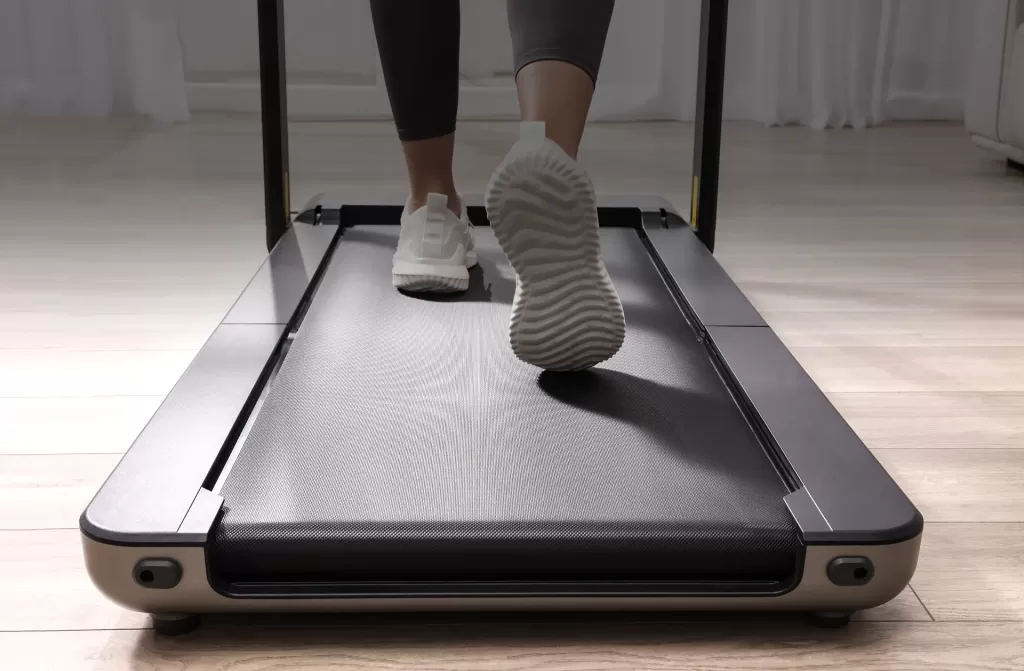
Like any piece of equipment, walking pads come with their general maintenance requirements One common issue that many users encounter is belt alignment problems, where the belt might start drifting to one side. This is especially prevalent in models where the walking deck folds in half. During the folding and unfolding of the deck, the mat is prone to shifting as the tension is taken on and off. Models that don’t fold in half, will have less belt alignment issues, by a significant amount.
While this can be a bit frustrating, especially when you’re trying to maintain a steady pace, don’t let this deter you; fixing it is typically a straightforward process.
The root of the issue often lies in the belt tension. When the belt isn’t tensioned correctly, it can veer off track. Luckily, the solution is usually as simple as adjusting the belt tension screws, which are typically located near the back of the walking pad. These screws help control the tightness of the belt, allowing you to fine-tune its position.
To fix the alignment, begin by powering off your walking pad and unplugging it for safety. Next, locate the tension screws and use the appropriate tool (often an Allen wrench or screwdriver, which may be provided with your pad). Start by making very small adjustments, turning the screws just a quarter turn at a time. After each adjustment, plug the pad back in and test it out to see if the belt runs smoothly. It may take a few tries, but be patient and keep adjusting until you find that sweet spot where the belt is centered and runs smoothly.
Remember, it’s normal for equipment to need a little tweaking now and then. By taking the time to adjust your walking pad’s belt properly, you’ll ensure that it operates efficiently and provides a smooth walking experience for years to come.
5. Setting up your space before using a walking pad
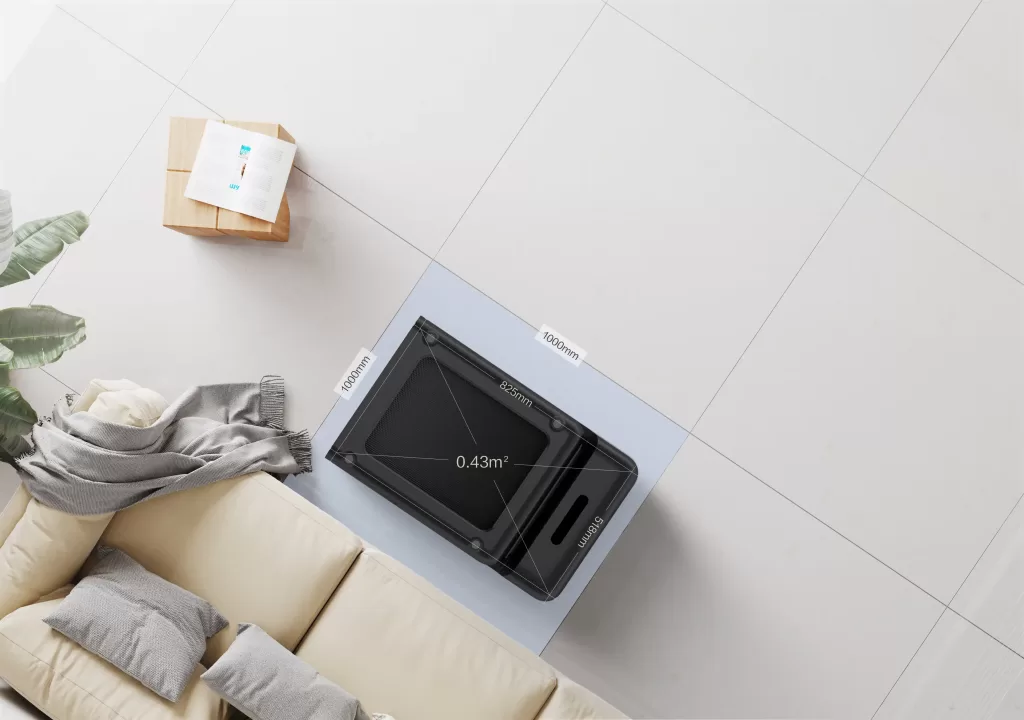
To get the most out of your walking pad, it’s crucial to set it up on a stable, flat surface. The right placement not only ensures smooth operation but also extends the longevity of your equipment. Start by choosing an area that is free of obstructions like furniture, clutter, or uneven flooring. This will allow you to move freely and comfortably.
We suggest making sure that there is nothing within 1.5m of the walking surface, just in case you slip or fall. This also allows you to safely exit the machine from any side if required.
Avoid placing your walking pad on plush rugs or carpets. Thick carpet can cause overheating, as it can trap heat and restrict airflow around the machine. Additionally, the plush surface can create instability, making it harder for the walking pad to remain steady, which could affect your workout. Instead, opt for a solid, hard surface like hardwood, tile, or a thin, tightly-woven mat.
Ensuring that your walking pad is properly positioned will not only keep it stable and prevent overheating, but it will also improve your overall walking experience. You’ll find your workouts are more consistent, and you’ll feel more confident stepping onto a steady, reliable surface each time.
6. Noise management
Walking pads, like any motorised equipment, can generate some noise due to their motor and moving parts. This is normal, but it’s worth taking steps to minimise the sound for a more pleasant experience. By paying attention to a few details, you can effectively reduce the noise and enjoy a quieter workout.
First, make sure that your walking pad is well-oiled, as discussed in topic 1. Proper lubrication reduces friction between the mat and the deck, which helps the motor run more smoothly and quietly.
Another important factor is the surface on which your walking pad rests. Placing it on a solid, flat surface can significantly reduce noise caused by vibrations. If the floor is uneven, it can cause the walking pad to wobble, which in turn can increase noise levels. A stable surface will ensure that the vibrations are minimised and the equipment operates more quietly.
For additional noise reduction, consider placing a rubber mat underneath your walking pad. This will further dampen vibrations and absorb some of the sound, making the experience more pleasant not just for you, but for anyone nearby as well. With these simple adjustments, you can enjoy your walking pad with much less noise.
7. Wear shoes (or at least socks!)
The walking mat surface of different models of walking pads will vary, some are slightly more padded than others, but they are still designed to minimise wear and tear, meaning they’re fairly coarse.
Unless you’re just jumping on for a quick 5 minute walk, we recommend at minimum wearing some padded socks to keep your feet from hurting.
If you’re planning on using a walking pad for more than 15 minutes, it’s recommended that you put shoes and socks on, just like you would if you were going for a walk outdoors. This improves the cushioning and support for your feet and ankles, makes your walk much more comfortable, and ensures that your body bounces back the following day.
One thing to remember when wearing shoes, make sure they’re clean before using the walking pad! If you have dirt or other debris on the soles of your shoes and jump onto the walking pad, you’ll find a nice little pile of mess to clean up at the back of the walking mat once you finish! If you’re set-up on a mat or carpet, then it can be really annoying!
By keeping these tips in mind when using a walking pad, you’ll be able to enjoy a smooth and safe walking experience. Remember, every walking pad is unique, so always refer to your model’s manual for specific care instructions. Here’s to your health and happiness with your new walking pad!


